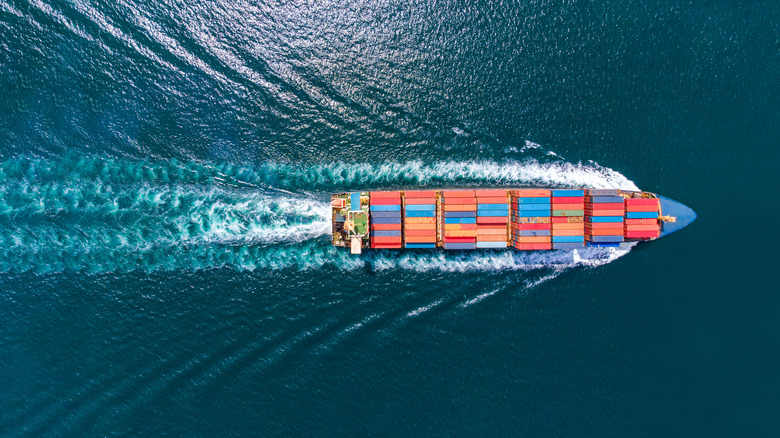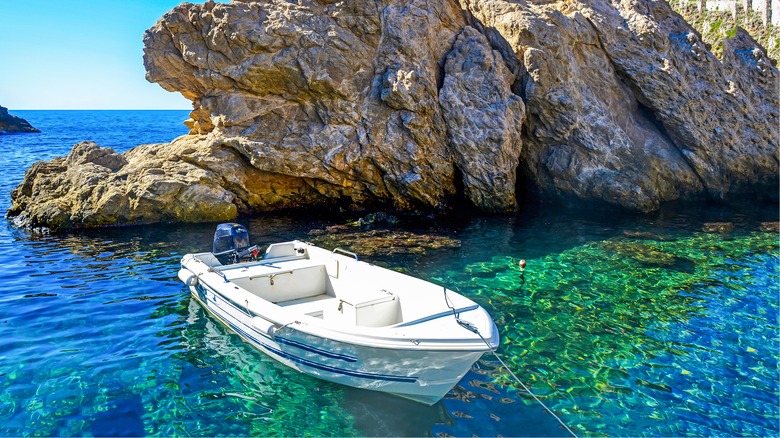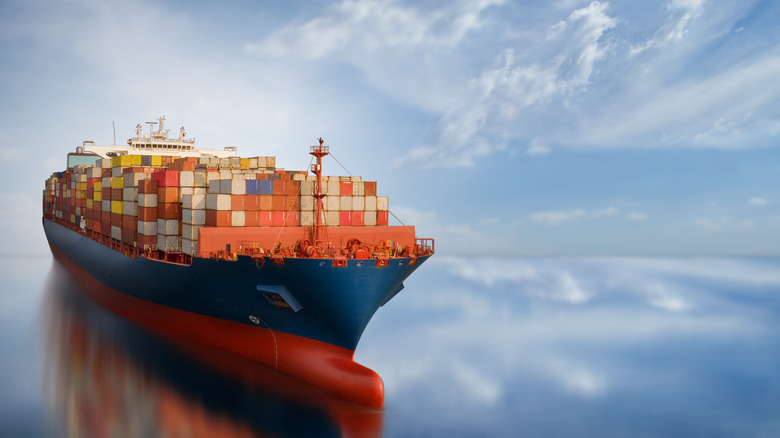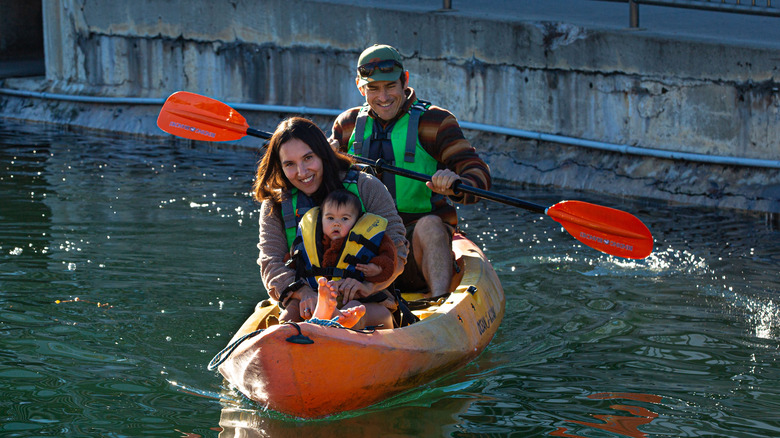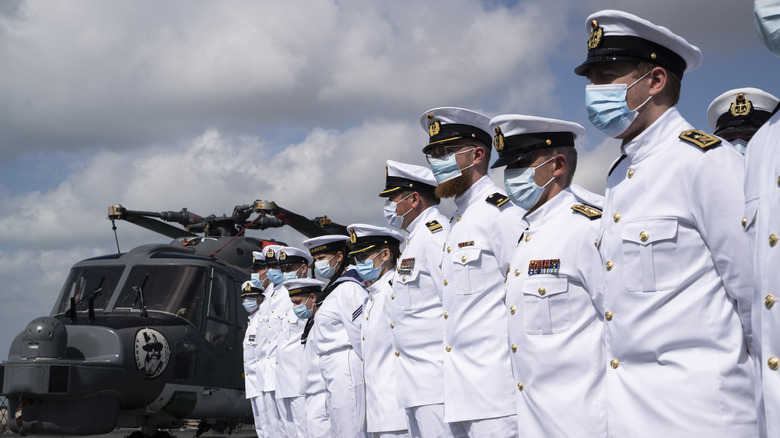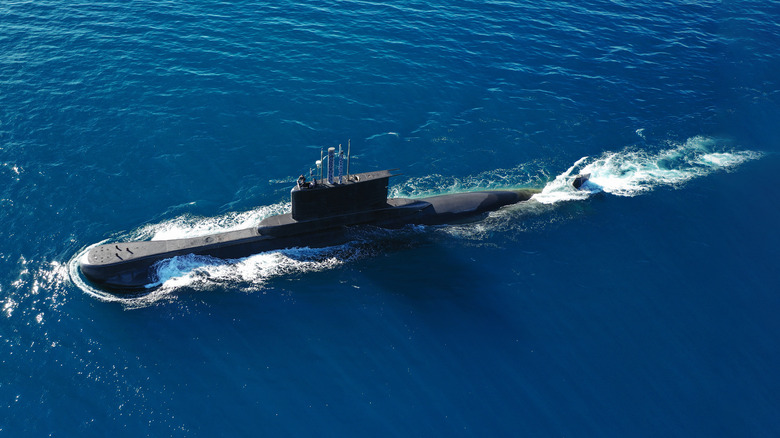Boat Vs Ship: What's The Difference?
The English language is complicated and can be difficult to learn. A lot of words have tricky, nonsensical spelling, or they have multiple contradictory meanings. Synonyms add to the complexity and create confusion because even the words with the closest dictionary definition can have different meanings when given cultural context.
One example of that last issue is "ship" and "boat." The two words are similar enough: both refer to vessels that float on water and carry cargo or people from one place to another, and the Merriam-Webster Dictionary says the two words are a rare example of what's known as circular defining, where two words define each other. A boat is described as a type of ship, and a ship is described as a boat.
But there are technically some distinctions between the two, even if it's hard to tell at a glance. Here are a few ways to help you identify what's a boat and what's a ship.
Size matters
One of the easiest ways to tell a boat from a ship is to consider the size of the vessel you're looking at. A common saying goes like this: "You can put a boat onto a ship, but you can't put a ship on a boat" (via Merriam-Webster Dictionary). But there are exceptions to that rule. Even large freight ships can be carried by specially designed ships, and some boats are too big to easily fit on smaller ships. Maritime Manual explains this with the example of a ferry boat. A ferry boat can carry a lifeboat, but that doesn't make it a ship.
There are more specific ways to define the size of a ship that can help. According to Merriam-Webster Dictionary, a ship is large enough to have at least three large masts. A boat, meanwhile, has fewer stipulations. The dictionary defines it as "a small vessel for travel on water." If a vessel is small enough to row with oars, for example, it's probably a boat.
Location, location, location
There's another major difference that can help narrow down the categories. Boats and ships usually don't operate in the same areas, according to Marine Insight. Ships are permitted to be "seafaring" vessels, or to operate in the open ocean. A boat would probably be restricted to smaller, less dangerous waterways (via Marine Insight).
Ships move cargo from continent to continent across the ocean, where boats primarily work on inland lakes and coastal areas, according to Marine Insight. Boats usually operate to move people around across short distances, while ships often focus on cargo and travel farther (via Maritime Manual). Ships can still transport people, according to Maritime Manual, but it's less frequent now that there are faster options like planes to choose instead.
Again, there are exceptions to the rule. Some boats can operate in the sea, and some larger ships need to move goods through more restricted waterways (via Maritime Manual).
How they move
Ships are designed for more long-term journeys across bigger distances, according to Marine Insight. That means they rely on more technology than a standard boat, especially for navigation and power. A boat can use oars, sails, or motors, according to Marine Insight. But a ship has to use propulsion from larger engines. A boat can use propulsion engines, according to Marine Insight, but they won't be the size or power of what you'd find on a ship.
Ships also tend to be built differently than boats because of where they operate. According to Veterans Breakfast Club, a ship is probably going to have a "V-shaped hull" to move more easily through deeper waters. A boat doesn't need that, so it may have a flat bottom for shallower water. That's not always true, but it's one rule you can use alongside many others to determine what you're looking at (via Veterans Breakfast Club).
Who's in charge
A major giveaway for whether you're on a ship or a boat might not even be the vessel itself. You can actually tell which one it is based on the crew manning the vessel. A ship, because of its more complicated operation systems and bigger size, requires a bigger crew and a captain to direct them, according to Marine Insight. If the ship is full of busy people checking the status of machinery and engines, it's probably a ship.
A boat, on the other hand, usually requires fewer people to operate it. Veterans Breakfast Club puts it this way: "A ship has a commander and a crew. A boat just has whoever is on it at the time." The crew of a boat might also be newer hires, according to Maritime Manual, who were hired at the time the boat began operating. A ship usually has a permanent crew dedicated to it.
What about submarines?
If you're trying to tell the difference between boats and ships, you might not think of the vessels that operate underneath the surface. But they play a part in this debate, too. Technically, at least with the United States Navy, they're classified as a ship regardless of their size (via Maritime Manual). But many of those who work on and operate submarines will refer to them as "boats" anyway, according to Veterans Breakfast Club. They don't follow many of the criteria that classify a boat or a ship, so what it is really depends on who you're talking to.
That's true for boats and ships, too. Many of the linguistic differences between the two can vary depending on where you are and what the cultural norms are. But for the most part, using size, area of operation, crew, and other factors, you can make a pretty educated guess that will put you on the right track.
